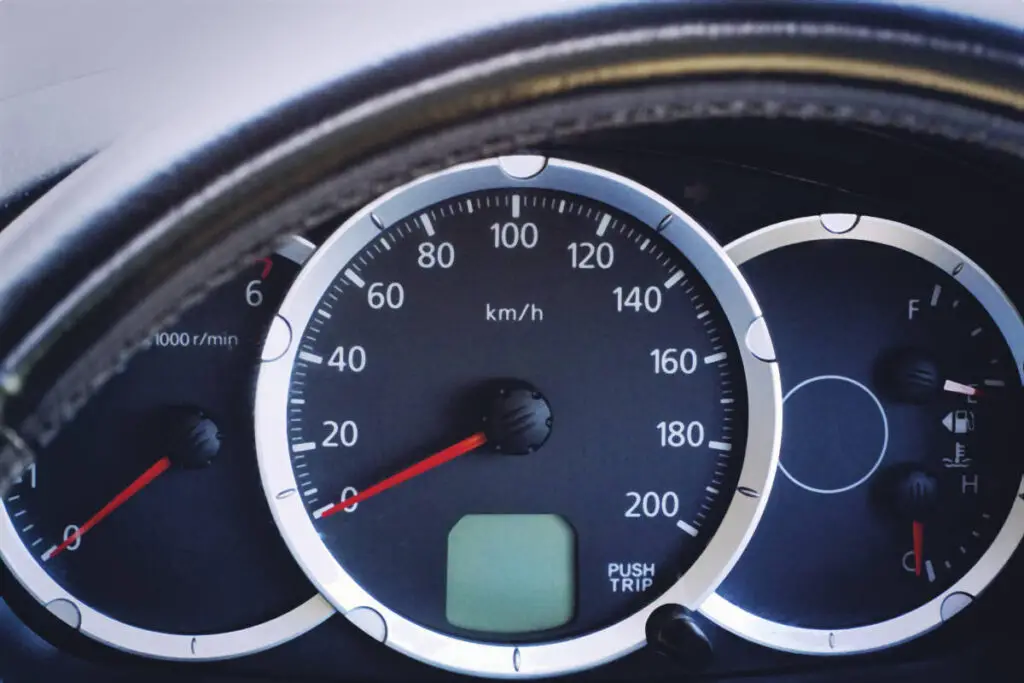The task of accurately estimating a vehicle’s speed is left to the speedometer. When purchasing a car from a dealer, the speedometer is calibrated or set to the car’s stock components.
The speedometer’s calibration may be thrown off if the owner chooses to alter the standard components, such as the tires on the car.
In this article, find out precisely what speedometer calibration is, how you can do it, and why you have to do it when getting bigger tires for your Ford F-150.
Advertising links are marked with *. We receive a small commission on sales, nothing changes for you.
What Is Speedometer Calibration?

The purpose of speedometer calibration is to ascertain whether a technical problem with your speedometer is causing it to misreport the speed of your car.
A technical defense for speeding might be employed if your attorney can demonstrate that there was a problem with your speedometer and you are charged with a traffic infraction.
It is frequently a good idea for drivers of older vehicles to get their speedometers calibrated since this can disclose a problem that can later be used as a technical defense or a mitigating factor for a charge of speeding or reckless driving.
Can Ford Dealer Calibrate Speedometer?
Some car dealerships and auto repair facilities provide speedometer calibration services. Still, you’ll probably need to contact them ahead of time to determine if they offer this service.
They’ll check the speedometer on your car to see whether it’s inaccurate and, if so, how much.
It is crucial to be aware that utilizing larger tires can change the calibration of your speedometer, and you might need to recalibrate it to receive an accurate reading of your car’s speed.
Mechanical and electronic speedometers are the two different types of speedometers. Everyone is tuned uniquely.
Adjusting Speedometer For Bigger Tires: Mechanical Speedometer
Count the teeth on the drive gear before adjusting your analog speedometer gauge for larger tires. Then, after determining the tire’s rotations per mile, swap out the old driving gear for the appropriate one.
A mechanical speedometer requires complicated calibration. In addition, since certain parts need to be replaced, a technician could be required.
Step 1. Determine How Many Teeth The Drive Gear Has
Locating your transmission is the first thing here that you have to do.
By raising your car and looking for the transmission from the bottom, you may locate the transmission with pinpoint accuracy.
Typically, a bolt secures the speedometer cable to the transmission’s tail shaft. The speedometer cable should be unbolted from the tail shaft.
Unbolt the screw keeping the gear housing cover in place to remove it. It would be quicker to use an adjustable spanner than any other spanner. Two gears will be seen. The driven gear is connected to the gearbox, and the drive gear is connected to the speedometer wire.
You should record your driving gear’s tooth count.
Step 2. Determine The Number Of Revolutions Per Mile For The Tire
By measuring from the top to the center of the wheel, you may determine the diameter of the wheel.
The diameter is then obtained by dividing this value by two—Divide 20,168 by the tire diameter to get the rotations per mile.
Step 3. Replace The Right Driven Gear In Place Of The Old One
Add the value of the driving gear’s tooth count to the tire’s number of revolutions per mile (RPM).
After that, multiply the result by the axle’s ratio.
The ratio of the axle is often listed in the owner’s handbook or the glove box. Divide the result by 1,001.
The figure you receive is the number of driving gear teeth required for your speedometer to display vehicle speeds accurately.
To guarantee the correct gear is sent, provide your local dealership with the make, model, and year of your automobile in addition to the driving gear’s number of teeth.
Change the old gear with the correct one, then attach the speedometer cord properly. Finally, put everything back where it belongs.
Adjusting Speedometer For Bigger Tires: Electronic Speedometer
Dent, the speedometer calibration button, hold the button down while you crank the car, and then let go of the button.
Press the accelerator pedal and travel the distance that the manufacturer advises.
Once you stop driving, push the button again, and the speedometer will reset itself.
The calibration of an electronic speedometer is simple.
The manufacturer always provides the distance of the test drive required for speedometer calibration. The owner’s manual typically contains this information.
How A Change In Tire Size Affects The Speedometer Accuracy?
When your car was brand-new, the factory calibrated the speedometer using the precise dimensions of the planned tires.
The tire’s circumference will increase if you switch to a taller tire. This means that your new tires will carry you farther after one tire rotation than your previous tires did.
The speedometer will display a slower speed than you are traveling if it has never been re-calibrated with the new tires.
For instance, the gearing and functioning of the car would be acceptable if your tire was 3% higher (still within allowed limitations for plus fitments). Still, your speedometer would indicate 60 mph while moving at 63.3 mph.
Running a road test is a simple technique to assess the accuracy of your speedometer. Mile signs on freeways let you know how many miles you have traveled.
Having a passenger in the car equipped with a stopwatch is the most secure and precise approach to doing this test.
Set your cruise control to 60 mph when you pass the milepost and start the timer. You should reach the next milepost in 60 seconds. To be specific, do the test three or four times. Then, take the average of the results.
Your speedometer must be re-calibrated if your average time is off by three seconds or more. The OD and subsequent change in rotations per mile are most likely the cause if you have replaced the tire and wheel package.

Luna Meschiari is a full-blooded car nut who is well known to local garages, as each article is meticulously researched and peppered with the latest piece of information. Guess what car she’s driving right now? A RAV4 2021 Hybrid. But her heart also sleeps for pickups like the F-150. Get to know Luna better on the about us page.
Advertising links are marked with *. We receive a small commission on sales, nothing changes for you.
